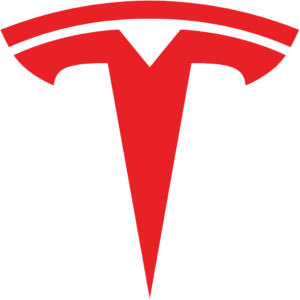Too Little, Too Late, Again
Listening to Autoline After Hours #524 last week, at about 49:00 – 49:40 John McElroy glibly stated that GM and LG Chem’s new battery plant under construction in Lordstown Ohio would be capable of cranking out sufficient batteries to permit GM to manufacture some 350,000 to 400,000 vehicles per year. Well, maybe…..someday. Let’s examine some factors that affect this new battery plant’s output.
First, note that GM’s Ultium battery is really LG Chem’s pouch style battery. These pouch battery cells, similar in external design to the ones in your laptop or tablet computer, are stacked either vertically or horizontally into battery packs of different kWh capacity.
Before GM/LG Chem can produce electric vehicle batteries, they must have a battery plant – a completed structure filled with state-of-the-art battery production equipment, staffed with a trained workforce, and one with a sufficient raw material supply.
GM started construction on its new three million square foot EV battery plant on May 22, 2020. The announced (initial) annual production capacity of this $2.3 Billion plant is 30 GWh (30,000,000,000 Wh), just a bit under Tesla/Panasonic’s Reno Giga battery plant’s initial stated capacity of 35 GWh. Currently Panasonic is using 13 battery lines in its Reno plant, adding a 14th line, and upgrading each line for more production capability.
It’s interesting to compare GM time to Tesla time regarding GM’s new battery plant. Tesla completed construction of its Shanghai China Giga automobile factory in less than one year – – from start to cars rolling off the line. It is doing the same in both its new vehicle plants in Berlin, Germany and Austin, Texas – only even faster. These are plants designed to produce entire vehicles – – from metal stamping to metal casting to body fabrication and painting to drivetrain production and final assembly.
In contrast GM is projecting its new battery plant will be “operational” (whatever that means) in “early 2022”. If we assume “early 2022” might mean by February 22, 2022, then that’s a 21 month construction time frame for a smaller and less complex manufacturing plant employing about 20% of the number of workers that Tesla’s automotive plants employ. There are many factors, among them Midwest winter weather, that could significantly delay GM’s plant completion date. GM is using conventional steel framework construction at Lordstown while Tesla is using pre-fabricated concrete/steel columns, beams, and walls for its Berlin plant. As a result of this and other factors, GM — already far behind the curve – is losing at least another nine more months to Tesla. It’s clear that these two companies operate in two vastly different worlds.
As to “operational”: does that mean in shakedown pilot production? Does that mean one or two lines running or all lines installed and running at production rates? Does that mean operating with yield rates for each line of over 50%, or anywhere near designed yield rates?
On to the yield issue – one of the most carefully guarded secrets in battery manufacture. Tesla’s 35 GWh announced capacity was theoretical, assuming 100% production yield rates. But Panasonic could never attain those rates and from the figures I have been able to glean from public reporting, eventually operates with yield rates between 70% and 85%. Indeed, in April of 2019 Elon Musk complained that Tesla/Panasonic’s Reno plant was only operating at two thirds of its stated capacity, or in his words about 24 GWh a year. Using a 85% yield rate lowers the plant’s annual capacity to some 30 GWh, roughly equivalent to some 1.8 billion battery cells a year, or about 5 million cylindrical batteries a three shift day!
LG Chem/GM or any other manufacturer’s new battery plant (including Tesla’s) will have to climb the same yield curve with a more difficult form factor to produce – the pouch cell rather than Tesla’s cylindrical cell design. As with Tesla, GM/LG Chem will have to calibrate new production equipment, synchronize new lines, and train a new workforce. So the question is how long will it take LG Chem to achieve its customary production yield rates. They have been in this game a long time and I suspect if all goes well meeting earlier construction and production machinery acquisition dates, they might be somewhere near plant design capacity times an “acceptable” yield factor of 80% by September of 2022. This means GM’s plant capacity after that point will be an effective 24 GWh annually.
To calculate a GM EV production estimate based on batteries from this new plant, we need to know one more thing – GM’s average Ultium battery size. This is where it gets a bit complicated. On March 4th, 2020 GM at its EV Battery Day announced its new Ultium battery “BEV 3” platform and 11 or 12 new forthcoming EV’s by 2023. These new EVs ranged from top of the line Cadillacs to Hummers to Chevy and Buick CUV/SUVs to a larger Chevy Bolt EUV, to a Chevrolet pickup truck and a Cruise Origin six passenger shuttle van. The two Buick SUVs are meant for China (where, unlike the US, Buick is a top seller), and may use prismatic form cells, perhaps even of a different battery chemistry.
GM said their BEV 3 battery sizes would range from 50 kWh to 200 kWh, with 19 possible battery motor combinations. This is in contrast to the over 500 engine-transmission combinations GM currently offers globally. That difference represents genuine progress toward electrification and cost/complexity reduction, if only GM would stop producing its ICE vehicles.
Seven of GM’s new US EVs are large and heavy, and two are of medium size. For instance, to be competitive GM’s two Hummer models and its Chevy pickup are likely to use a 200 kWh battery pack. Given this weighting, for the purpose of this example below, I will use an average GM US electric vehicle battery size of 110 kWh. To be more accurate by using a weighted average battery size, a reasonably accurate sales forecast for each of GM’s EV models would be required.
With an effective battery production capability of 24.0 GWh and an average vehicle battery size of 110 kWh, that means GM’s EV production using batteries from this plant could be 218,000 vehicles a year, not 350,000 to 400,000 vehicles. If we raise the yield factor to 85% and lower the average battery pack size to 95 kWh, that results in an allowable production of 268,000 GM electric vehicles per year. On average (243,000 vehicles), this production number is some 31% to 39% below McElroy’s estimate. Moreover, GM/LG Chem’s new battery plant will not likely be in full production for another two years!
As we investigate this matter, GM has created further battery supply problems for itself by recently cutting a deal with Nikola to produce its Ultium battery and hydrogen fuel cell (HFC)-powered Badger pickup. (The HFC is an optional addition to the Badger’s battery pack.) This vehicle wasn’t included in GM’s March 4th announcement. Where will these Badger batteries come from? Given the recent allegations of fraud against Nikola and the fact that those allegations are being investigated by both the SEC and US Department of Justice, I expect that GM will not complete its “Subscription Agreement” with Nikola dated September 3, 2020 by their agreed upon December 3, 2020 deadline. That is if Nikola still exists at all by that time.
We don’t know how many other sources of EV batteries GM has and what kind of battery quantity commitments GM’s sourcing group has made or has been able to secure from short on capacity global suppliers, but GM again appears to be a shining example of too little too late. In its March 4 Battery Day presentation, GM stated its intent to be selling one million EVs globally by 2025. Given this modest aspiration, in my judgment GM should immediately be constructing about two to three more new battery plants of equal or larger size than its new Lordstown plant in partnership with established top tier battery suppliers such as LG Chem, Panasonic, CATL, BYD, and Samsung. Alternatively, GM could learn to produce its own state-of-the-art batteries. Now there is an idea!
Even such an effort on GM’s part would continue to lag behind Tesla though, as Tesla – convinced they can manufacture a superior battery in a faster lower cost way – will be producing its own batteries in each of its auto and truck manufacturing plants by the start of 2022. Tesla’s new “Roadrunner” batteries will allow Tesla to leapfrog the entire auto industry by another three to five years. These soon-to-be Tesla-produced batteries are, at least for now, in addition to the batteries Tesla buys from Samsung, CATL, and Panasonic. What’s a poor Tesla competitor to do?
During its March 4th GM Battery Day, GM is reported as saying that through its battery plant partnership with LG Chem it would drive nickel-based EV battery costs below $100 a kWh at the pack level. Sorry GM, given Tesla’s forthcoming battery day announcements on September 22nd, as of that date your target is 25% too high!
Note: After Tesla’s Battery Day on September 22nd, I will compare Tesla’s announced battery plans with the predictions I made in my Tesla Update article of June 29, 2020. You might want to review that blog post before Battery Day.
Image courtesy Pixabay
Your feedback in the form of comments or suggestions are welcome in the comment window. Thank you for following my blogs on this site and for participating in my blogging community.




